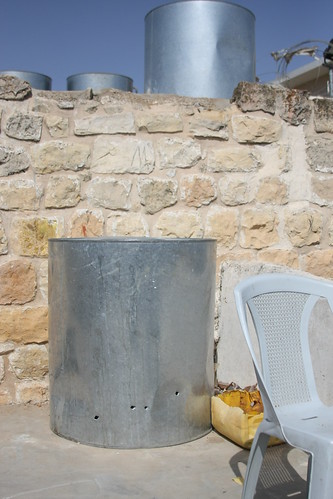A water tank on a rooftop in Al-Khaleel / Hebron, rendered useless after having been shot several times by neighboring settlers.
In many ways, it is impossible to study water rights of the Naqab Bedouins without considering the broader history of water conflicts. In the Naqab/Negev region, as in much of the Middle East and other water-scarce areas, there is a long history of conflicts exploiting water as a weapon.
One comprehensive study of water conflicts throughout history (including everything from early biblical stories of conflict to events in 2010) makes it appear that the Middle East contains the most fought-over water resources in recorded history. See: http://www.worldwater.org/conflict/list/. Of note are many conflicts between Israel and neighboring countries over the Jordan River and other water supplies.
Water also holds a central role in the broader Palestinian/Israeli conflict. Starting in 1967, Israel claimed state property rights over the water in occupied Palestinian land in the West Bank, Sinai, and other areas. This illegal seizure put 90% of the water in the area under Israeli control.
Although the Oslo Accords in 1994-1995 saw Israeli forces withdraw from some of those areas, and ostensibly included an agreement for equal water sharing between the Israelis and Palestinians, the disparity in water control remains. Today, most Palestinians in the West Bank must purchase heavily taxed water from Mekorot, an Israeli company, even though much of the water is sourced from within the West Bank. For an overview of this issue, see: Palestine News Network, Op Ed: Water As a Tool for Continuing Oppression and Injustice.
- F.B.J.

No comments:
Post a Comment